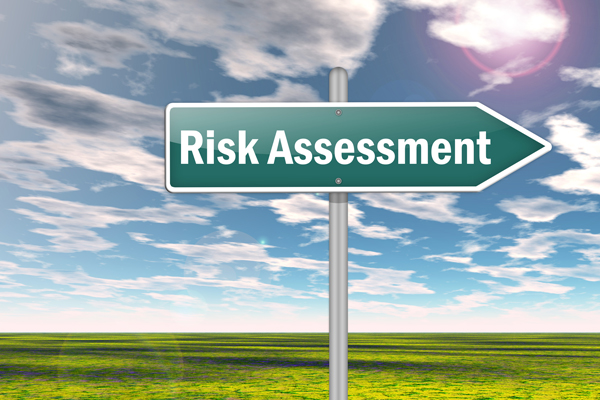
Care providers sometimes consult me when they’ve had a critical inspection – and often the decision-making around the Mental Capacity Act (MCA) has been identified as poor. Risk assessments are often singled out as too restrictive. We work within a culture that sometimes seems to expect us to avoid all possible risk, and this can lead to very risk-averse decision-making. And people who lack capacity are the most vulnerable to excessive risk aversion.
Peggy’s care home, and her social worker, wound each other up into a panic when she said she was going on a cruise holiday with her friend Norman. They convinced themselves that Peggy’s dementia meant she was at great risk of ‘going over the side’; they decided that she would be far safer stopping in the care home. Norman and Peggy were very upset. They’d been going on these holidays together, without accidents, for 20 years and loved them. A judge was asked, as an emergency, to decide if she should go. It’s a short judgement, written in clear language – perhaps because the ship was about to sail, potentially without Peggy.
The judge was in no doubt that it was in her best interests to go on the cruise holiday. He pointed out that the care home and social workers meant well for Peggy, but they focused exclusively on what might go wrong, without balancing the possible risks by admitting the pleasure she would gain from the holiday. They were looking for reasons why she should not go on the cruise, rather than reasons why she should.
Read the case here https://www.scie.org.uk/publications/adultsafeguardinglondon/files/courtofprotectioncardiffcouncivpeggyross.pdf?res=true and do share it with staff who are making decisions about risk to individuals.
When do we assess risk?
Often we are scared at the level of someone’s confusion and distress, and worry that we need to restrict their freedom very greatly to keep them safe. Almost always, we think they lack capacity to understand the risks they run.
Extremely restrictive care plans usually relate to people who lack capacity. After all, if there’s no reason to doubt their capacity, people can decide for themselves what level of risk they are willing to live with.
Restraint must be recognised, and necessary, and proportionate
As a quick reminder of the Mental Capacity Act (MCA) definition of restraint: you restrain someone lacking capacity to consent if you
- use force, or the threat of force, to make them do something they are resisting, or
- restrict their freedom of movement whether they are resisting this or not.
And for this to be lawful, it must be
- in that person’s best interests, and also
- necessary to prevent harm to the person and
- a proportional response to the likelihood and seriousness of this harm.
Remember that you can’t avoid all risk
A famous judge said, ‘what is the good of making someone completely safe if, by doing so, you’re making them intensely unhappy?’ The Care Quality Commission (CQC), and the Care Inspectorate Wales (CIW) both insist that you don’t seek to avoid all risk by giving someone no freedom at all. They know that you cannot avoid all risk
What makes a good risk assessment?
A good risk assessment starts from the individual and what they want to do, and looks in a positive, proactive way for creative ideas to enable them to have as much freedom as possible. You know that Julian would not be safe wandering freely in the neighbourhood: his confusion and short-term memory loss mean that he would be at great risk of getting lost, which would in turn lead to a high risk of accidental harm, distress, or even abuse from others.
His partner or child or best friend has a far better insight than you will, into how to keep him safe in a proportionate way, and how not to upset him. For example, ‘Julian’s verbal communication is poor, but he understands and responds to non-verbal cues such as when you stand between him and an unsafe road, or if you smile and take his arm, suggesting a different route. He loves watching any sport.’
Millie she had to leave her smallholding after a stroke, and has developed dementia, but animals and nature are still very important to her. Her first risk assessment said: dogs and cats are unpredictable, the countryside is cold and wet, farms are dangerous places, and Millie lacks capacity to recognise or appreciate these risks… so for her own safety she must remain inside. But we’ll put a bird-table outside her window.
I was pleased by the bird-table… but such overarching restriction was worrying. Inspectors from the regulator felt the same, and queried this very restrictive care plan, suggesting a more positive approach to risk would better reflect the empowering ethos of the MCA.
The staff in her care home leapt at the idea of working out ways to make Millie happier. They suggested bringing some of their own pets to the garden, and, later, found ways for staff and Millie’s family to take her to a local smallholding where, despite her disabilities, she helped feed the ducks, hens and lambs.
One thing led to another. This care home has now adopted some chickens rescued from a battery egg farm, and staff realise the huge difference it’s made to many of the residents as well as Millie. Those who can, help look after the birds; those who can’t, seem to gain real pleasure from watching them as they potter about their enclosure.
Encourage positive, proportionate risk enablement
Some risks are highly foreseeable and would lead to real harm. You must of course identify these risks and find ways to protect the person against them. The MCA is clear, like the regulators, that you and your staff are protected from liability if your response is both necessary and proportionate, as described above. But we must balance safety against happiness: the search for extreme safety can lead to extreme distress and misery.
Your staff are your assets in coming up with practical ways to meet people’s wishes safely while enriching their lives. Millie’s care home is now recognised as outstanding. Why not give a prize for the most creative ideas? Then take a deep breath, re-do your risk assessments in positive terms, and try out practical ways to make these ideas happen!






